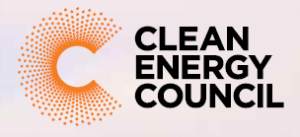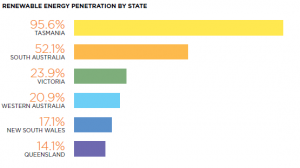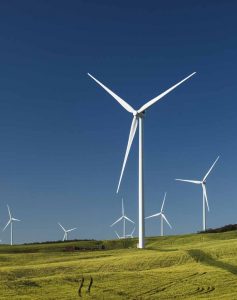
Clean Energy Australia report 2020
https://www.cleanenergycouncil.org.au/
clean-energy-australia-report-2020
Excerpt from Introduction, Kane Thornton, CEO, Clean Energy Council
More than 2.2 GW of new large-scale renewable generation capacity was added to the grid in 2019 across 34
projects, representing $4.3 billion in investment and creating more than 4000 new jobs.
Almost two-thirds of this new generation came from large-scale solar, while the wind sector had its best ever year in 2019 as 837 MW of new capacity was installed across eight new wind farms.
Perhaps the year’s biggest story though is the ongoing exceptional performance of the rooftop solar sector. After breaking records in each of the previous two years, the sector smashed through the 2 GW barrier for the first time in 2019. The 2.2 GW of new capacity added was almost double the record set just two years ago and the number of systems installed was the highest since the solar boom of 2012.
The energy storage sector is also starting to pick up momentum, with the more than 22,000 small-scale batteries installed in 2019 taking Australia’s household storage capacity past 1 GWh for the first time. And with a further 15 utility-scale batteries under construction and several other projects financially committed at the end of 2019, 2020 promises to be a breakthrough year for batteries in Australia.

Despite the industry’s record-breaking year, the electricity grid and the lack of a long-term energy policy continue to
be a barrier to further growth for largescale renewable energy investment. Grid congestion, erratic transmission
loss factors and system strength issues caused considerable headaches for project developers in 2019 as the
grid struggled to keep pace with the transition to renewable energy. While Australia’s energy regulators are
working hard to address these issues, a quick resolution is essential to ensuring that the industry’s momentum can be restored.
These grid issues and the lack of policy certainty were both major factors in the slowdown in new projects
securing financial commitment in 2019.
[Lack of policy certainty relates to absence of national policy to replace Renewable Energy Target as it expires this year. This means renewables growth is dependent on state government policies, as referred to on the climate change institutions and articles page. Grid upgrade issues relate to energy security in the context of high penetration of renewables. The CECs’ position on issues raised by the Finkel review into energy security in Australia can be found at the link below. Coverage of these issues is beyond the scope of this site.
https://www.cleanenergycouncil.org.au/advocacy-initiatives/energy-transformation/the-finkel-review ]

Australias-clean-energy-investment-outlook-September-2019
Executive summary
After a record breaking two years of investment in large-scale wind and solar projects, the pace of projects reaching financial close has slowed dramatically over the past two quarters. The Clean Energy Regulator announced this month that the large-scale 2020 Renewable Energy Target (RET) has now been met. What happens next is unclear.
Quarterly investment commitments in new renewable energy projects reached a high of over 4500 MW in late 2018, but has since collapsed to less than 800MW in each of the first two quarters of 2019.
There has been a rapid increase in the number of utility-scale batteries being committed across Australia, combined with a proliferation of pumped hydro projects being investigated. There is no shortage of potential from utility scale batteries or pumped hydro to support the continued deployment of variable renewable energy projects. These storage projects can play a significant role to complement and support the continued deployment of renewable energy in a way that delivers a more resilient, affordable and reliable energy system.
However a lack of federal energy policy certainty and combination of a range of regulatory challenges mean that investment confidence in large-scale renewable energy and the accompanying energy storage is fragile. As Australia’s coal fired generation continues to close, there is a clear need for policy and regulatory reform to support the continued deployment of renewable energy and energy storage that will continue to reduce Australia’s energy sector carbon emissions, secure system reliability and lower energy prices.
A one page infographic of CEC’s goals and initiatives
Distributed-energy-resources-revolution-paper
THE DISTRIBUTED ENERGY RESOURCES REVOLUTION: A ROADMAP FOR AUSTRALIA’S ENORMOUS ROOFTOP SOLAR AND BATTERY POTENTIAL, August 2019
Excerpt from Introduction
We need to change the way we manage solar and battery systems and how they interact with the grid. We’ll need new rules to mandate technological capability and new markets to make best use of the capabilities already at our disposal.
The next generation of solar and battery systems will be intelligent, with advanced communications capability, cybersecurity and an interface to markets. This will massively increase the solar hosting capacity of networks.
Policy makers need to establish markets for the grid services that will be required by future energy networks. They include markets for grid support, incentives to avoid unnecessary investment and support for dynamically balancing supply from millions of variable energy systems.
Recommendations
In order to facilitate and unlock the enormous potential for distributed energy resources (DER), the Clean Energy Council (CEC) proposes the following recommendations:
Distribution network service providers
• Distribution network service providers (DNSPs) should require inverters to have Volt-Watt and Volt-var response capability as a condition of grid connection for new DER systems.
• DNSPs that have already adopted static zero-export limitations should invest in network intelligence and move toward dynamic export limitations so that they can utilise DER on their networks more effectively.
• The CEC supports the development of multi-sided trading platforms as a means of enhancing system optimisation and customer benefits of DER uptake.
• DSNPs should move toward more cost-reflective network tariffs, which could include time-of-use or demand-based charging.
• Connection agreements should allow for the dynamic engagement of DER in the power system, and energy customers should have a right to initiate a review of their connection agreement and the opportunity to receive a better deal.
Standards
• Volt-Watt and Volt-var response should be a mandatory requirement in the Australian standard for inverters (AS 4777.2).
• Common standards, protocols and application programming interfaces (APIs) for communication with and between DER are being developed and should be supported and adopted.
Australian Energy Regulator
• The Australian Energy Regulator should recognise the customer value and the important role of dynamic network intelligence for managing high levels of DER on the grid and should approve expenditure required by networks to enable this.
State and territory governments
• Government rebate programs for batteries should include virtual power plant (VPP) capability requirements in their eligibility criteria.
State and territory licensing and other regulatory frameworks should be developed and strengthened to ensure that microgrids can proceed with protections for customers in place and barriers to community energy projects are removed.
• State and territory governments should review their planning and development approvals systems to remove any barriers to developers of new suburbs aiming for very high DER penetration and minimal grid impacts using grid-connected microgrids and embedded networks.
Policy makers
• Policy makers should establish market frameworks that will enable DER to supply new energy services. This could include new markets to support grid function, system optimisation (avoiding unnecessary investments) and system balance.
• The Australian Energy Market Operator (AEMO) and the Australian Energy Market Commission (AEMC) should consider how aggregation of DER can be optimised using a single asset classification. Third-party aggregators should be able to provide wholesale demand response, export and frequency control ancillary services (FCAS) under a single classification.
• DER should have the same market access as utility-scale assets. Where this market access is prevented by regulatory barriers, this should be reviewed by AEMO and/or the AEMC.
• Policy makers should adopt alternative network revenue models and tariff structures and supporting retailer reforms that would enable increased grid-enabled value exchanges such as peer-to-peer (P2P) trading, network service provision by DER and VPP activity.
• Policy makers should ensure that the distribution market operator (DMO) role (which would be a commercial role) is separated from the distribution system operator (DSO) role in electricity distribution market reform options being considered.
[I don’t have the expertise to evaluate many of these recommendations, but they are an informed, industry-based indication of issues for consideration in achieving energy security/stability at high levels of distributed renewable penetration].
Links to CEC videos